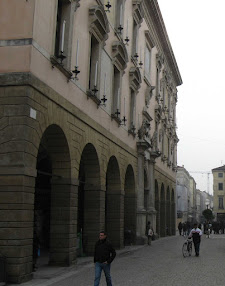Romanesque architectural gem had ancient origins
The oldest church in Padua is the simple but beautiful
Santa Sofia in Via Altinate, a building which is thought to date back to the 11th
century.
The church of Santa Sofia is the oldest in
Padua, dating back to the early 12th century
Santa Sofia is well worth visiting to see an altarpiece
painted by Andrea Mantegna when he was just 17, and the font, brought in from
another church, in which the two sons of Galileo were baptised.
Built on the site of a Roman temple, Santa Sofia
managed to survive 14th century modifications to make it comply with Council of
Trent reforms, and the disruption caused by the invasion of Italy by Napoleon’s
troops.
The church was carefully restored in the 1950s and today
it still retains many of its ancient architectural features and frescoes.
It is believed that the Romanesque stone and brick façade
of Santa Sofia was built on ground that was then considered holy between about 1106
and 1127, but the church’s semi-circular apse may have been built earlier. A
document has been discovered, dated 1127, that was written to urge completion
of the building work in process.
Some of the artefacts found on the site date from between
the second and the fourth centuries. And, Santa Sofia’s crypt has been judged,
using scientific methods, to have been built within about 50 years of the crypt
of St Mark’s Church in Venice. This existed before the 11th century church was
built around it to house the remains of St Mark.
Andrea Mantegna’s altarpiece in Santa Sofia, depicting
the Madonna and Child in conversation with saints, was painted in about 1450. It
was the artist’s first independent work and when he signed it, he gave his age
as 17.
The church was carefully restored in the
1950s to preserve the orginal features
Santa Sofia has at times housed Augustinian and Benedictine
nuns, but the nuns were expelled from the building during the Napoleonic occupation
of the city.
Not to be missed near the entrance to the church of Santa
Sofia, is a basin for holy water, which was brought from the Church of Santa Caterina
d’Alessandria in Padua. It is believed this basin was used as a font for the baptism
of the sons of Galileo.



